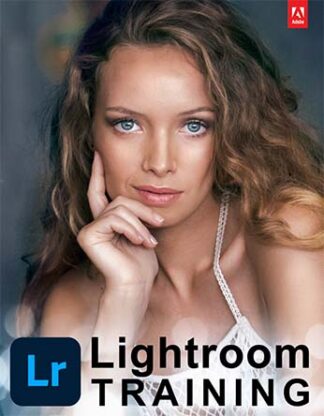Teleconverters cost between $125 and $500, and they’re a relatively inexpensive way to increase your focal length and get closer to wildlife or sports. However, they’re not a good investment for most photographers. Teleconverters connect between your lens and your camera body, increasing the focal length and minimum f/stop number by 1.4x or 2x. For example, if you were to connect a 1.4x teleconverter to a 70-200mm f/2.8 lens, the lens would function as a 98-280mm f/4 lens. Connect a 2x teleconverter to the same lens, and it would become a 140-400mm f/5.6 lens. Teleconverters work by capturing the center part of the image as it passes between your lens and your camera and then spreading that center part of the image across the entire sensor. Essentially, it’s exactly like cropping to the center half or one-quarter of your picture. However, because teleconverters work by taking half or one-quarter of the light from your sensor and spreading it across the entire sensor, they have some rather nasty side effects (described in more detail in the sections below):
- Teleconverters drastically reduce the light coming in, requiring you to use a slower shutter speed or a higher ISO. With living subjects such as sports or wildlife, using a slower shutter speed isn’t an option, so you need to use a higher ISO, which increases the noise in your picture and degrades image quality.
- Teleconverters slow down autofocusing and, in most cases, completely prevent your camera from autofocusing. I never recommend using teleconverters unless your lens has a minimum f/stop number of f/4 or lower.
- Teleconverters reduce the sharpness of an image. Unless you are using a professional-quality lens, the final image won’t show any more detail. If you are using a professional-quality lens, you can often get more detail from distant subjects by using a teleconverter.
- Teleconverters narrow your field of view, which makes wildlife photography more challenging. It’s hard enough to keep a flying bird in view with a 500mm lens. Add a 1.4x teleconverter, and it becomes about twice as hard to keep the bird in the frame.
However, if you have a professional telephoto lens with a minimum f/stop number of f/4 or lower and you shooting a faraway subject, a teleconverter can produce more detailed images than simply cropping a picture taken without the teleconverter. One good example of this is astrophotography; if you’re taking pictures of the moon or other far away objects, a teleconverter will show more detail than you would get by cropping your pictures.
Using a 1.4x Teleconverter
 When using a 1.4x teleconverter, you’ll lose the ability to autofocus unless:
When using a 1.4x teleconverter, you’ll lose the ability to autofocus unless:
- You’re using a lens that has a minimum f/stop number of f/4 or lower, OR
- You have a Canon 5D Mark III, Canon 1 series, Nikon D600, Nikon D800, or Nikon D1-D4. With the Canon 5D Mark III and 1 series, you will be limited to the center focusing point. With the D600, you will be limited to the 7 center focusing points. With the D800, you will be limited to 11 autofocus points. With the Nikon D4, you can use any focusing point, but you should limit yourself to the center 9 to provide more reliable focusing.
Additionally, a 1.4x teleconverter blocks half the light from reaching your lens. Even if your camera can autofocus with the teleconverter attached, it will be much slower and might be too slow to keep up with moving subjects. I only recommend using a 1.4x teleconverter with the following lenses:
- 70-200 f/2.8
- 70-200 f/4
- 300mm f/2.8
- 300mm f/4
- 400mm f/2.8
- 400mm f/4
- 500mm f/4
- 600mm f/4
Notice that those are all telephoto lenses; you shouldn’t use teleconverters with wider angle lenses. Instead, simply buy a telephoto lens. If you have a full-frame camera, you might consider using a camera with a compact (crop/APS-C) sensor instead. The smaller sensor provides a 1.5x or 1.6x increase in focal length and often provides greater detail than a similar full-frame camera. For example, I often use a Canon 7D compact camera instead of a much more expensive Canon 5D Mark III for photographing wildlife, because the 1.6x crop of the 7D captures more detail in far away subjects.
Using a 2x Teleconverter
 When using a 2x teleconverter, you’ll lose the ability to autofocus unless:
When using a 2x teleconverter, you’ll lose the ability to autofocus unless:
- You’re using a lens that has a minimum f/stop number of f/2.8 or lower, OR
- You’re using a lens with a minimum f/stop number of f/4, and you have a Canon 5D Mark III, Canon 1 series, Nikon D600, Nikon D800, or Nikon D1-D4. As described in the previous section, you will be limited to fewer focusing points.
Additionally, a 2x teleconverter blocks three-quarters of the light from reaching your lens. Even if your camera can autofocus with the teleconverter attached, it will be much slower and might be too slow to keep up with moving subjects. I only recommend using a 2x teleconverter with the following lenses:
- 70-200 f/2.8
- 300mm f/2.8
- 400mm f/2.8
Here’s another video we made that covers some of the pros and cons associated with a 2x teleconverter (vs the Canon 100-400mm f/4.5-5.6L IS II):





